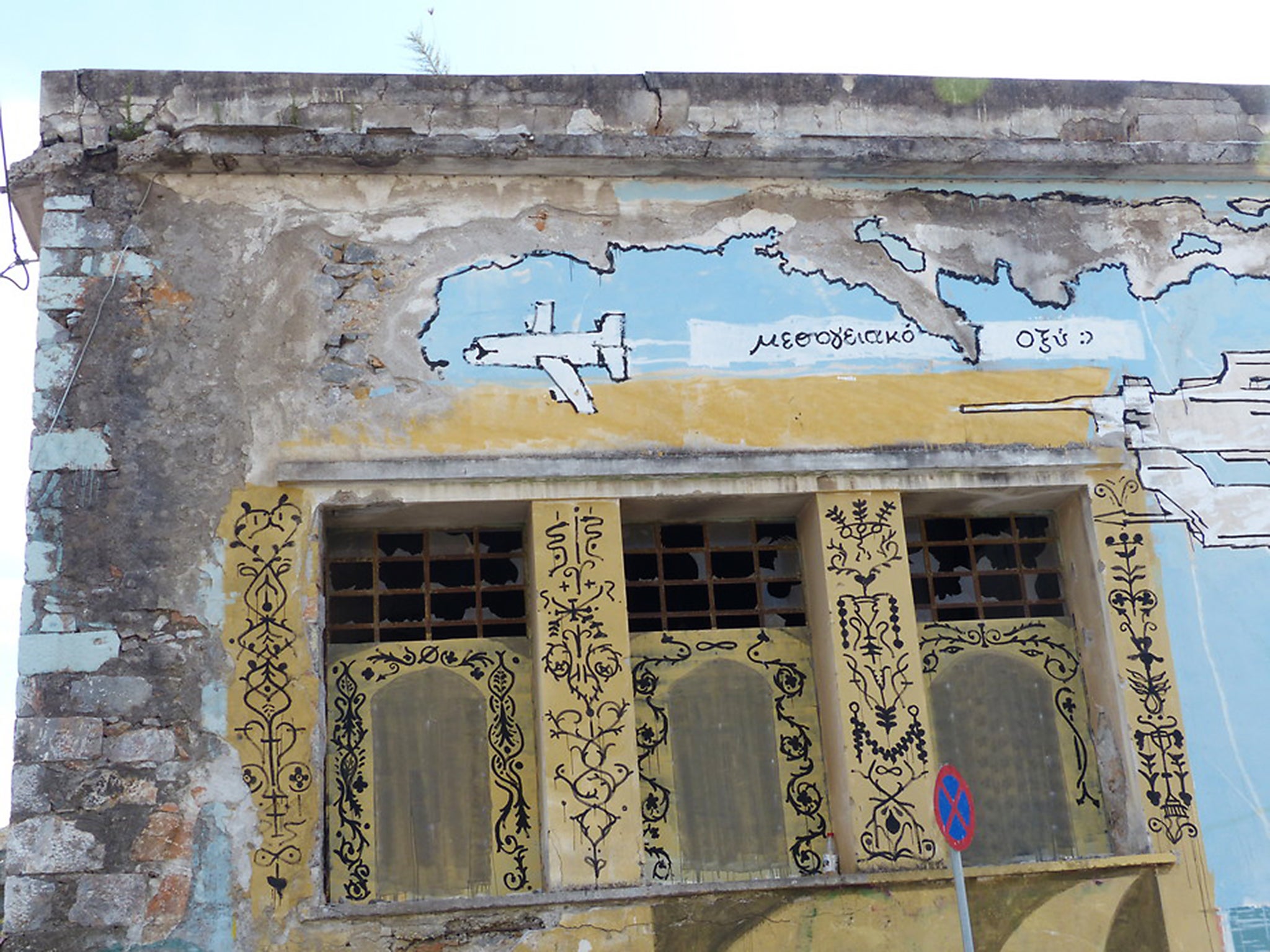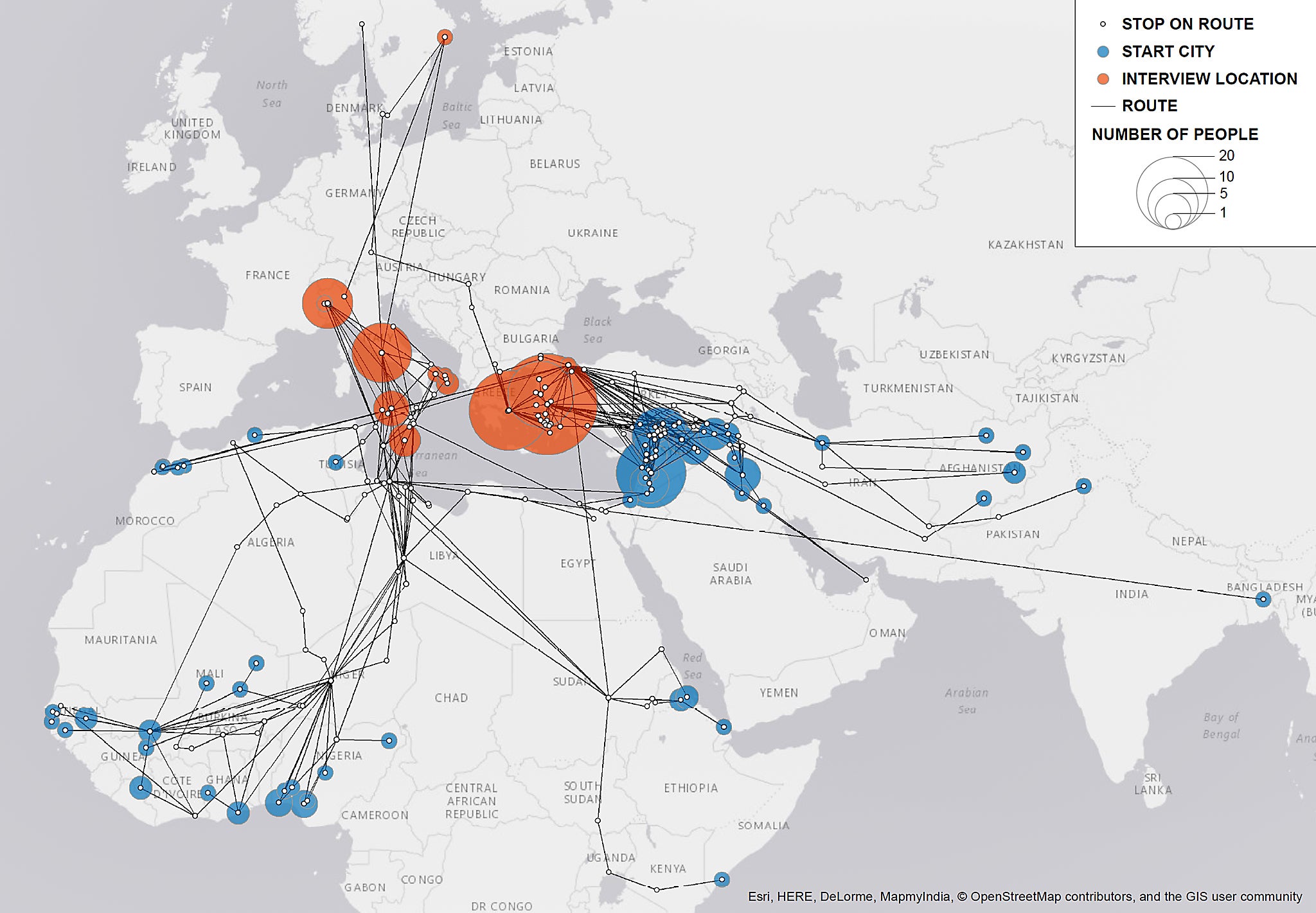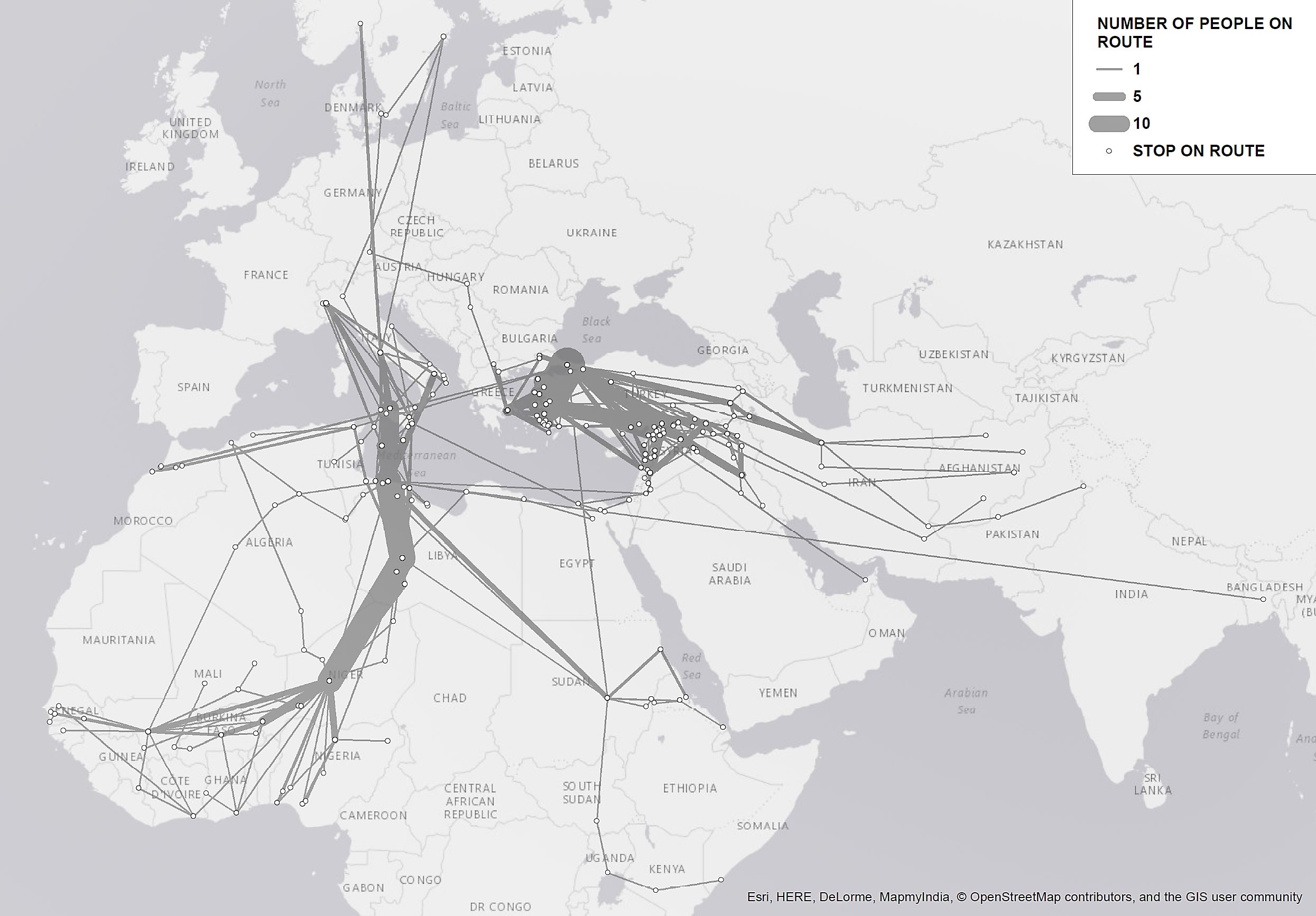No direct flight: new maps show the fragmented journeys of migrants and refugees to Europe
Maps showing the intricate network of varied routes refugees and migrants have taken to get to Europe reveal how their paths have come to converge in the search for safety, write Heaven Crawley, Frank Duvell and Nando Sigona

Your support helps us to tell the story
From reproductive rights to climate change to Big Tech, The Independent is on the ground when the story is developing. Whether it's investigating the financials of Elon Musk's pro-Trump PAC or producing our latest documentary, 'The A Word', which shines a light on the American women fighting for reproductive rights, we know how important it is to parse out the facts from the messaging.
At such a critical moment in US history, we need reporters on the ground. Your donation allows us to keep sending journalists to speak to both sides of the story.
The Independent is trusted by Americans across the entire political spectrum. And unlike many other quality news outlets, we choose not to lock Americans out of our reporting and analysis with paywalls. We believe quality journalism should be available to everyone, paid for by those who can afford it.
Your support makes all the difference.Politicians across Europe have talked about the arrival of refugees and migrants in 2015 and 2016 as if it were an unprecedented event, a single coherent flow of people “heading for Europe”. There is a focus on the beginning and end of the journeys people make – at the expense of almost everything in between. Our new research with 500 refugees and migrants in Italy, Greece, Turkey and Malta reveals a much more complicated picture of protracted, fragmented journeys.
Between them, our respondents travelled along nearly 100 different routes before eventually reaching Europe, sometimes having spent months or even years living elsewhere. The convergence of these routes in Turkey and Libya helps us to understand why the number of migrants heading to Europe increased to just over a million in 2015. Although there were two main countries – Turkey and Libya – from which refugees and migrants departed towards Europe, the “back story” to this migration was actually composed of an intricate network of varied routes. This can be clearly seen in the first of two maps we have created by charting the routes of 122 of the 500 people we spoke to between September 2015 and January 2016.
For some – mainly those from Iraq and Syria – the journey to Europe was relatively direct. Of the Iraqis we interviewed in Greece, 86 per cent had arrived less than one month after leaving their home country. But for many, the decision to travel to Europe was a much longer process. This was particularly the case for Afghans arriving in Greece, many of whom had lived in Iran for many years or had even been born there, and for Eritreans arriving in Italy, many of whom had lived for extended periods in Sudan, Egypt or Israel.
For many people, the countries to which they originally travelled – including Iran, Sudan, Libya, Turkey – were initially perceived as places where they could settle and live. This is why the vast majority of the world’s refugees remain in low- and middle-income countries. These countries include Turkey, which for the second year running hosted the largest number of Syrian refugees in 2015 – an estimated 2.7 million. This compared to Pakistan (1.6 million), Lebanon (1.1 million), Libya (up to 1 million), Iran (979, 400), Ethiopia (736, 100) and Jordan (664, 100). It was only when people found themselves unable to rebuild their lives in these places that they made the decision to move on. The decision to move, and move on.

In previous reports on the Central and Eastern Mediterranean routes, we identified the significant factors driving people to leave their home countries. These included conflict and political persecution, the activities of terrorist and insurgency groups such as Islamic State. Kidnapping and the threat of forced – sometimes indefinite – military conscription, as well as dire economic conditions were also factors. But if we want to understand the dynamics of migration to Europe we need to differentiate between the initial drivers of migration from countries of origin and those which propel people onwards beyond the immediate neighbouring countries. Some of these drivers reflect the ongoing desire to be safe: Syrians, for example, living in Lebanon who felt too close to the ongoing conflict or feared they might be located by Assad government officials. Or Eritreans who had left due to indefinite military conscription but were unable to rebuild their lives in Sudan due to the civil war there.

But they also relate to an individual’s inability to build or rebuild a life due to a lack of rights and opportunities for employment, particularly where there is protracted conflict. While all Afghans experience varying degrees of discrimination in Iran, the situation is particularly difficult for those from the ethnic Hazara minority who are more easily identifiable due to their distinctive physical appearance. Those we spoke to had experienced severe discrimination in Iran, had no citizenship rights and faced a shortage of education for their children. Combined with increasing anxieties about what would happen to them if they were forced to return to Afghanistan where Hazara are subject to increasing attacks, this had made life in Iran intolerable. News that they might finally be able to secure protection in Europe propelled those we interviewed to move on. Libya had also been a destination country for many of those we interviewed in Italy who thought that it would provide opportunities for work, as it has done for many years. But the violent, chaotic reality of everyday life in the country was very different from what they had expected.
Those who had little intention of staying in Libya often found their journeys interrupted and stays extended as a result of kidnapping and violence. Others who had intended to settle, work and live in Libya came to realise that they would have to move on again to find somewhere safe. It was the combination of these different factors – conflict and insecurity in the home country but also in the countries to which refugees and migrants then moved – that led to the convergence of flows in Turkey and Libya and, in turn, the very significant increase in arrivals during 2015, as our second map shows.
Beyond push and pull
Migration across the Mediterranean in 2015 did not consist of a single coherent flow but rather was made up of a number of distinct sub-flows from many countries and regions. It included both individuals and families with diverse migration histories and experiences. The situation has not changed in 2016 except, of course, that the route from Turkey to Greece and onwards into other EU Member States has now largely closed as a result of the EU-Turkey agreement which provides for the return of those crossing the Mediterranean by boat. The vast majority of those arriving in Europe during 2015 came from countries in which there was well-documented conflict and human rights abuse. But it is impossible to fully appreciate the complex drivers of migration without examining the ways in which political, economic and social factors come together to shape the experiences of those on the move. The longer people are on the move, the more complicated – and difficult to unpack – these factors become. The solution to the “crisis” lies not only in opening up, and significantly expanding, safe and legal routes to protection for refugees and migrants, but also addressing the problems faced by those living in countries outside of Europe for whom access to rights, employment, education – and hope – remain elusive.
This article originally appeared in The Conversation. Heaven Crawley is a research professor at Coventry University. Frank Duvell is an Associate Professor and Senior Researcher at the University of Oxford. Nando Sigona is a senior lecturer and deputy director at the Institute for Research into Superdiversity at the University of Birmingham
Join our commenting forum
Join thought-provoking conversations, follow other Independent readers and see their replies
0Comments